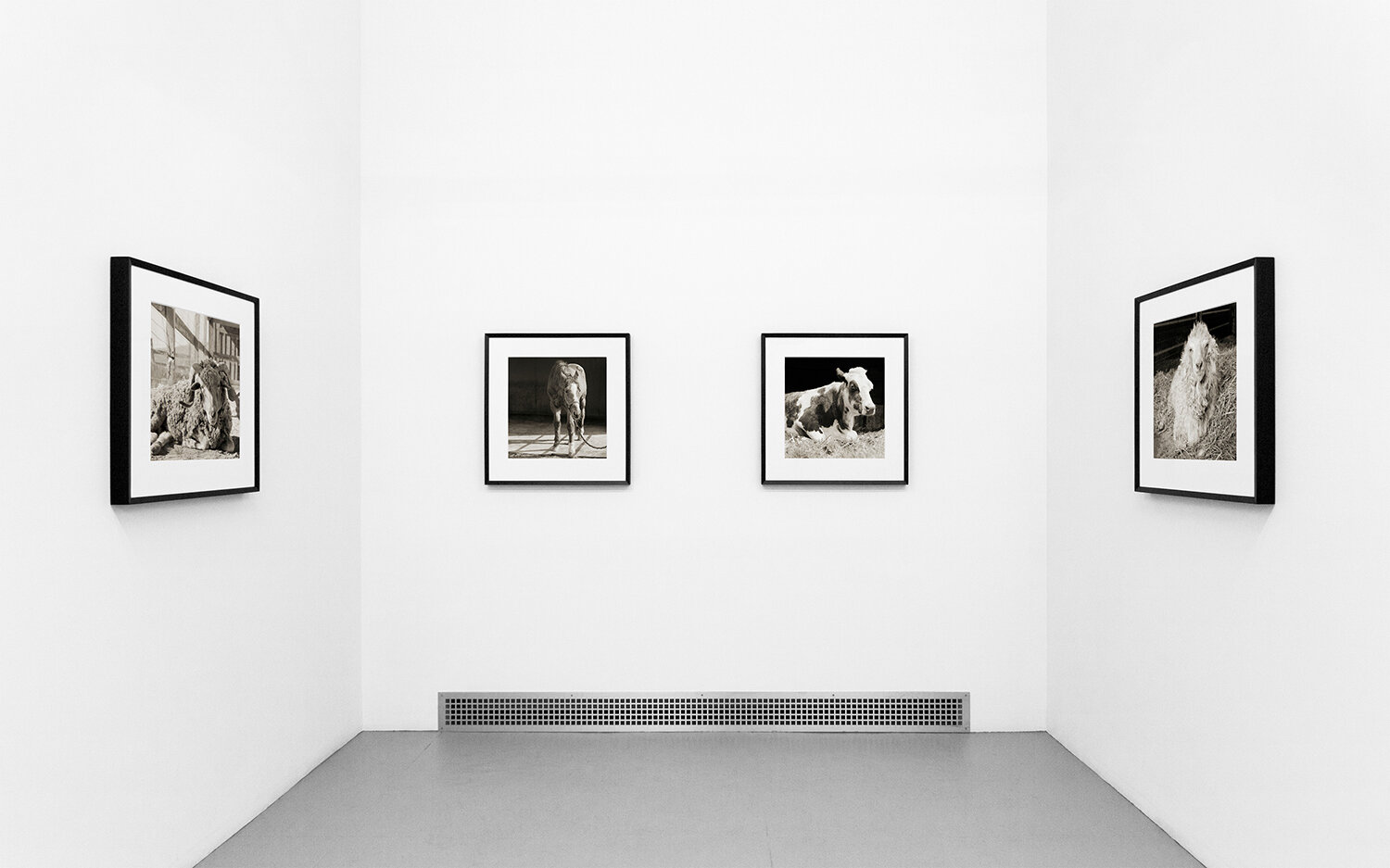Traveling exhibition
Allowed to Grow Old is available as a traveling exhibition comprised of 43 images, each paired with brief text about the lives of the animals photographed. Additional text panels are also available with background details about the project. The exhibit is accompanied by the book, Allowed to Grow Old (University of Chicago Press, 2019), which includes essays by NY Times bestselling author Sy Montgomery, Farm Sanctuary co-founder Gene Baur, and Anne Wilkes Tucker, curator emerita of the Museum of Fine Arts, Houston.
Prints are available as a standalone exhibit or for inclusion in group exhibitions that focus on themes relating to animal art, activist art, mortality, and aging. Please contact the studio for additional information. Below is a sampling of exhibition reviews and installation photos.
exhibition reviews
“Isa Leshko’s photographs of the elderly fit right into this tradition of attentive portrait making. After building trust with her sitters, she gets in close, making empathetic portraits that tenderly capture the personalities of her subjects. Like many elders, they each continue to struggle along, with loneliness, weariness, battered bodies, and the residues of hardships endured, both physical and emotional. But Leshko has photographed them with respect and dignity, teasing out flashes of recognition from even the most reluctant of her subjects. She has taken the time to be present, and that investment pays off in pictures that consistently tell rich stories.
The twist in this narrative comes from the fact that her elderly sitters aren’t people, but animals. Saved from the slaughterhouse, deliberate extermination, or the veterinary euphemism of “being put down”, these aging farm animals, racehorses, wild sheep, and rescue dogs now inhabit various animal sanctuaries around the United States, where they can comfortably live out their days in the animal equivalent of a human nursing home or retirement community.
That we’re not particularly used to seeing photographs of elderly animals is mostly a reflection of our often one-sided relationship with horses, cows, pigs, sheep, and other farm animals. We tend to see these animals through the lens of our own human needs, so when they are too old to do our back-breaking work, to provide us with milk or meat, or to create the next generation of thoroughbred race winners, we tend to consider them worthless. And so we summarily end their lives, leaving very few to actually reach old age.
Leshko’s sensitive portraits of these unlikely animal survivors will make you wonder about the morality of such decisions, and about our treatment of animals more generally….
Most animal photography has a cloying cuteness or a reflected sense of what humans want animals to be, so the fact that Leshko’s photographs reframe the interaction, in essence giving the animals the opportunity to tell their own stories for once, makes her pictures stand out. By respectfully showing us the beauty and dignity to be found in aging animals of all kinds, she has offered us humans both a measure of guilt at how we have treated them and an encouragement to forward-looking advocacy on their behalf. Her compassionate, gentle, well-crafted portraits remind us that we can do better for these animals, if we only take a moment to see them as sentient, feeling individuals.”
“Shot in natural light, the photographs are black and white. This makes for a slight distancing effect, as color would not. That bit of distance ensures that while Leshko’s subjects look charming and moving and lovable, which they certainly do, they’re never cute. In an artist’s statement, Leshko notes that she strove to capture each creature’s “unique personality.” On the evidence of these pictures, she succeeded. What you see — what you feel — is respect no less than affection….
These photographs will make you smile. Cumulatively, as Leshko intends, they also can’t help but make you think. Depending on how willing you are to follow that thinking to its logical conclusion, tears may succeed smiles.
Allowed to Grow Old is a meditation on the inevitability of death coupled with sanctity of life, told through sensitive portraits of rescued farm animals growing old in sanctuaries.”





